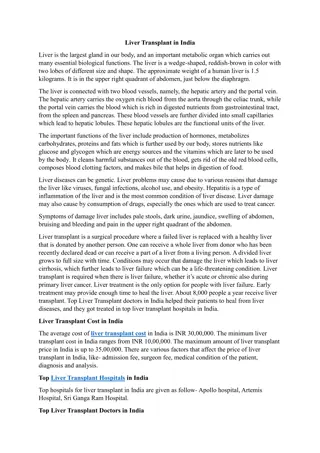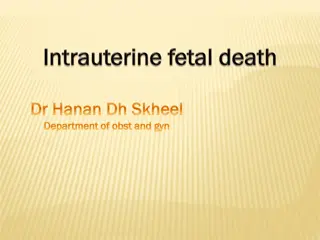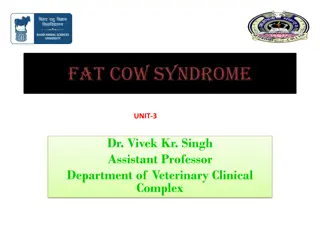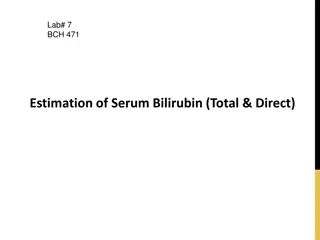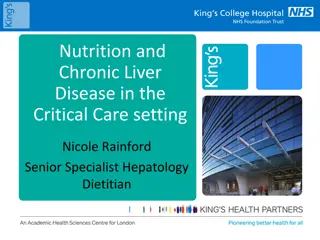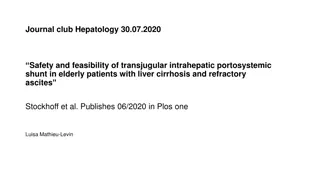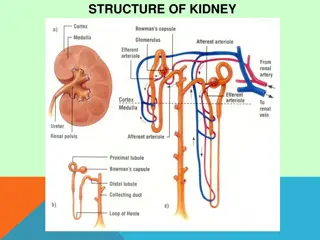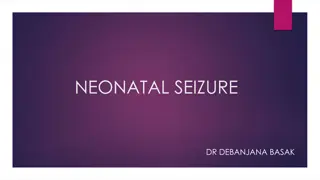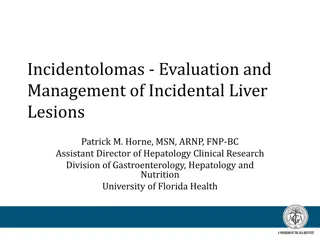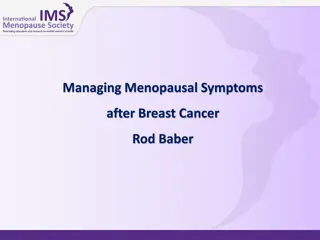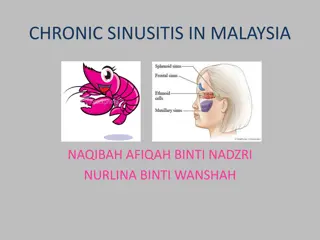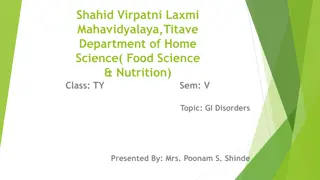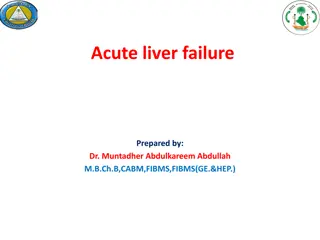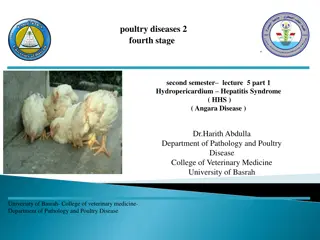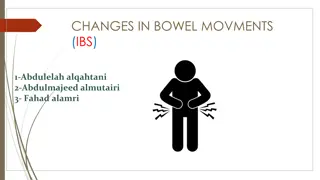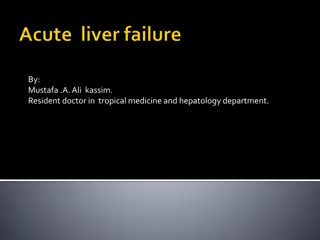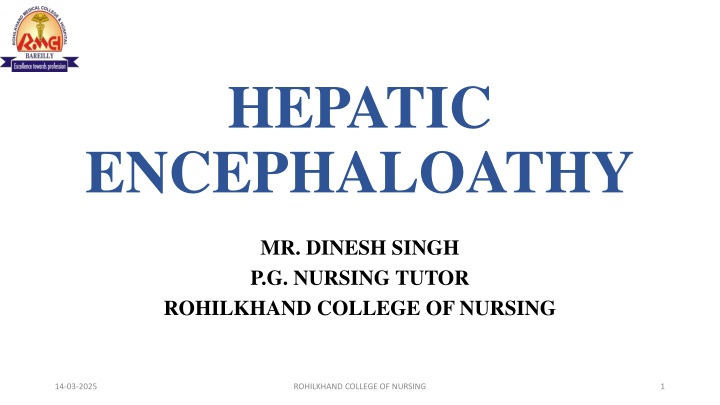
Hepatic Encephalopathy: Causes, Symptoms, and Management
Hepatic encephalopathy is a neurological disorder resulting from severe liver dysfunction, leading to toxin accumulation in the blood affecting brain function. Learn about its definition, causes, clinical manifestations, diagnostic evaluation, and management, including prevention strategies.
Download Presentation

Please find below an Image/Link to download the presentation.
The content on the website is provided AS IS for your information and personal use only. It may not be sold, licensed, or shared on other websites without obtaining consent from the author. If you encounter any issues during the download, it is possible that the publisher has removed the file from their server.
You are allowed to download the files provided on this website for personal or commercial use, subject to the condition that they are used lawfully. All files are the property of their respective owners.
The content on the website is provided AS IS for your information and personal use only. It may not be sold, licensed, or shared on other websites without obtaining consent from the author.
E N D
Presentation Transcript
HEPATIC ENCEPHALOATHY MR. DINESH SINGH P.G. NURSING TUTOR ROHILKHAND COLLEGE OF NURSING 14-03-2025 ROHILKHAND COLLEGE OF NURSING 1
OBJECTIVES Introduction of the Hepatic Encephalopathy. Define the Hepatic Encephalopathy. Explain the causes of Hepatic Encephalopathy. State the clinical manifestations of Hepatic Encephalopathy. Elaborate the diagnostic evaluation of Hepatic Encephalopathy. Discuss the management of Hepatic Encephalopathy Describe the prevention of Hepatic Encephalopathy. 14-03-2025 ROHILKHAND COLLEGE OF NURSING 2
INTRODUCTION 14-03-2025 ROHILKHAND COLLEGE OF NURSING 3
DEFINITION Hepatic encephalopathy is a nervous system disorder brought on by severe liver disease. When the liver doesn t work properly, toxins build up in the blood. These toxins can travel to the brain and affect brain function. 14-03-2025 ROHILKHAND COLLEGE OF NURSING 4
14-03-2025 ROHILKHAND COLLEGE OF NURSING 5
Grading Grade 1: Poor concentration, slurred speech, disordered sleep rhythm. Grade 2: Occasional aggressive behaviour, lethargic. Grade 3: Marked confusion, lethargic, sleepy but responds to pain and voice, gross disorientation. Grade 4: unresponsive to voice, may or may not respond to painful stimuli, unconscious. 14-03-2025 ROHILKHAND COLLEGE OF NURSING 6
ETIOLOGY Advanced liver diseases Acute or chronic hepatic failure 14-03-2025 ROHILKHAND COLLEGE OF NURSING 7
Pathophysiology Due to etiological factors Liver cells are unable to detoxify ammonia into glutamine and then into urea Accumulation of ammonia in the body Ammonia concentration also arises in blood stream Due to increased permeability of blood brain barrier for ammonia Cause central nervous system dysfunction Hepatic encephalopathy ROHILKHAND COLLEGE OF NURSING 14-03-2025 8
CLINICAL MANIFESTATION Disturbance in Consciousness Changes in Personality Disturbance in sleep rhythm Childish behavior Impaired memory May be aggressive outburst Mental confusion Euphoric Apathy Fetor hepaticus: Foul-smelling breath associated with liver disease Drowsiness due to mercaptans. Coma 14-03-2025 ROHILKHAND COLLEGE OF NURSING 9
CONTI Neurological signs Flapping tremor/Asterixis (in pre coma) Exaggerated tendon reflex Extensor plantar reflex. 14-03-2025 ROHILKHAND COLLEGE OF NURSING 10
DIAGNOSTIC EVALUATION Diagnosis is usually made clinically: 1. Elevation of blood ammonia 2. Hypokalemia 3. EEG (Electroencephalogram) 4. Cerebrospinal fluid Examination and CT Scan 5. Other routine investigations: CBC, ESR, electrolytes LFT or RFT, Coagulation profile. 14-03-2025 ROHILKHAND COLLEGE OF NURSING 11
MANAGEMENT MEDICAL MANAGEMENT Hospitalization is mandatory. ABC maintenance. Remove the cause and precipitating factors. IV fluid dextrose saline and inj. Thiamine. Maintenance of fluid, electrolytes and calorie Diet restriction of protein diet. High glucose diet. 14-03-2025 ROHILKHAND COLLEGE OF NURSING 12
Conti Avoid Constipation: Lactulose 15-20 ml / TDS Antibiotics: Neomycin, Ampicillin, Metronidazole Inj. Vitamin K 14-03-2025 ROHILKHAND COLLEGE OF NURSING 13
CONTI NURSING MANAGEMENT 1. 1.5 gm of protein per kilograms of body weight may be ordered to maintain plasma osmotic balance and promote liver cell regeneration. 2. Vitamins supplements are usually given. Protein rich food is includes: Fish Meat Eggs Dairy products 14-03-2025 ROHILKHAND COLLEGE OF NURSING 14
SUMMARY 14-03-2025 ROHILKHAND COLLEGE OF NURSING 15
REFERENCES 14-03-2025 ROHILKHAND COLLEGE OF NURSING 16
14-03-2025 ROHILKHAND COLLEGE OF NURSING 17

